http://www.ancient-origins.net/news-history-archaeology/analysis-skeletons-reveals-harsh-punishment-ancient-egypt-004178
14 October, 2015 - 03:42
Mark Miller
Analysis of Skeletons Reveals Harsh Punishment in Ancient Egypt
Egyptian
kings and pharaohs conquered entire nations, but if a person stole so
much as an animal hide he could be whipped with 100 lashes and stabbed
five times in the back… and then be sent back to work.
Archaeologists studying skeletons of people buried in Amarna’s humble commoners’ cemetery have speculated five men with wounds to their shoulder blades were punished in this way. A wall carving from ancient Egypt spells out the punishment for stealing animal hides, but researchers did not know if the penalty was actually carried out, reports USA Today.
The alleged crimes of the men in question, who were in middle age at the time of their deaths, are not known, nor are their names or identities. But if the stab wounds on their shoulder blades were indeed punishment, they probably were able to return to work, an important consideration in Amarna, a labor-intensive city where workers were mustered to build huge temples and palaces for Akhenaten, the pharaoh who imposed a new religion on Egypt.
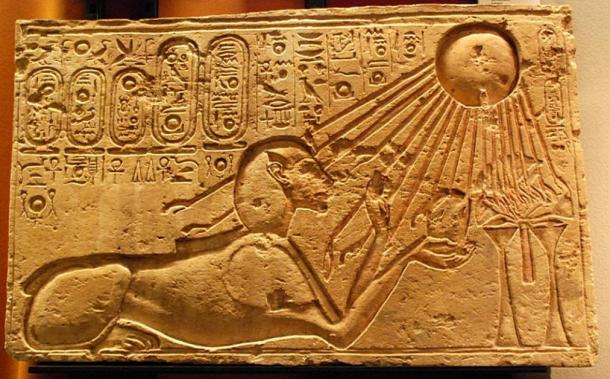
While life was hard for all laborers in Egypt, it was especially hard in Amarna, which Pharaoh Akhenaten built about 3,300 years ago and dedicated to Aten, the sun god. Workers there rushed to construct stone temples and palaces for Aten and for royalty and other nobility.
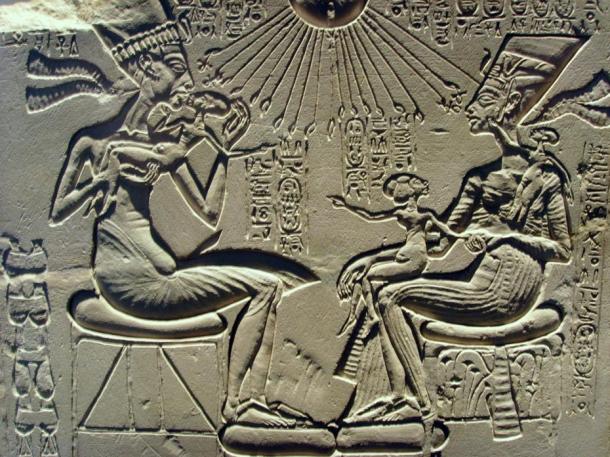
Dabbs and her colleagues noticed nearly 10 years ago that some bodies from the Amarna commoners’ cemetery had a gash in the bones of the shoulder blade, as if someone stood behind them and injured them. It is unlikely the wounds were from either falls or battle.
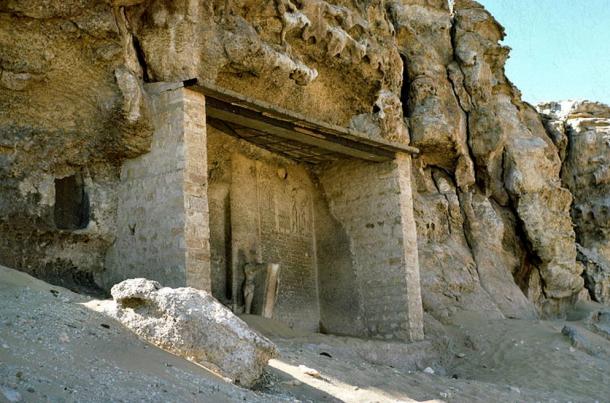
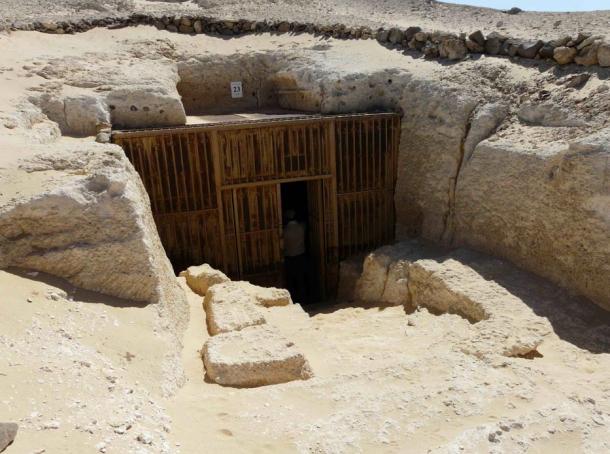
An overarching code of law for ancient Egypt has not been found, but these punishments and other facts about the law are known from funerary documents, court manuscripts and some other writings. Even so, after Upper and Lower Egypt were united, around 2925 BC, the people had a comprehensive system of law, says Facts on File. There were laws around murder, theft, grave robbing and necrophilia.
Dabbs told USA Today it is possible the punishment of stabbing in the shoulder blades was meted out only in Amarna.
Featured image: Depiction of punishment in ancient Egypt (akhepedia.com).
By Mark Miller
Archaeologists studying skeletons of people buried in Amarna’s humble commoners’ cemetery have speculated five men with wounds to their shoulder blades were punished in this way. A wall carving from ancient Egypt spells out the punishment for stealing animal hides, but researchers did not know if the penalty was actually carried out, reports USA Today.
The alleged crimes of the men in question, who were in middle age at the time of their deaths, are not known, nor are their names or identities. But if the stab wounds on their shoulder blades were indeed punishment, they probably were able to return to work, an important consideration in Amarna, a labor-intensive city where workers were mustered to build huge temples and palaces for Akhenaten, the pharaoh who imposed a new religion on Egypt.

This stone relief of the ancient Egyptian city of
Amarna shows Akhenaten as a sphinx with Aten the sun god illuminating
him and his offering. (Photo by Hans Ollerman/Wikimedia Commons)
Archaeologist Gretchen Dabbs of Southern Illinois University and
colleagues are studying skeletons from Amarna cemetery and have found
that the everyday people there had many hardships, including an
insufficient diet and hard labor, USA Today says. She and her team published their findings in the International Journal of Paleopathology.While life was hard for all laborers in Egypt, it was especially hard in Amarna, which Pharaoh Akhenaten built about 3,300 years ago and dedicated to Aten, the sun god. Workers there rushed to construct stone temples and palaces for Aten and for royalty and other nobility.

Akhenaten, Nefertiti and their children bask in
the rays of the sun, Aten, a god that Akhenaten raised above all others.
(Photo by Gerbil/Wikimedia Commons)
The regular folks buried in the commoners’ cemetery had high rates of
joint disease, possibly from lifting and carrying heavy loads. Their
skeletons also show signs of malnutrition-related diseases, including
scurvy.Dabbs and her colleagues noticed nearly 10 years ago that some bodies from the Amarna commoners’ cemetery had a gash in the bones of the shoulder blade, as if someone stood behind them and injured them. It is unlikely the wounds were from either falls or battle.

A stele under a lintel at Amarna (Photo by Orell Witthuhn/Wikimedia Commons)
“But the gashes turned out to be a good fit for a punishment described in the ancient texts. One ancient Egyptian fable tells of a thief who steals an ox and is punished with 100 blows and five wounds,” USA Today says. “A royal decree describes a similar fate for officials who commandeer workers for a construction project, and ancient Egyptian tax dodgers were beaten while lying face-down on the ground, just as those in the Amarna cemetery were stabbed from behind.”As harsh as 100 lashes and five gashes may seem, these men may not have had it as bad as some perpetrators in ancient Egypt. Some people were put to death for various crimes, including grave robbing. Some were beaten, some had their noses, ears, hands or tongues cut off for a variety of crimes. According to Facts on File, women who committed adultery had their noses cut off to ruin their looks so she wouldn’t do it again. Most women in ancient Egypt were dealt with more harshly than men as in other ancient cultures. “A man caught in adultery with a married woman received a beating as a penalty, usually a thousand strokes with a stick,” the site says. “However, if a man raped a freeborn woman, he was castrated.”

The entrance to the southern tombs at Amaran (Photo by Kurohito/Wikimedia Commons)
One man of the 25th Dynasty of the seventh century BC is believed to have been buried alive for robbing graves.An overarching code of law for ancient Egypt has not been found, but these punishments and other facts about the law are known from funerary documents, court manuscripts and some other writings. Even so, after Upper and Lower Egypt were united, around 2925 BC, the people had a comprehensive system of law, says Facts on File. There were laws around murder, theft, grave robbing and necrophilia.
Dabbs told USA Today it is possible the punishment of stabbing in the shoulder blades was meted out only in Amarna.
Featured image: Depiction of punishment in ancient Egypt (akhepedia.com).
By Mark Miller
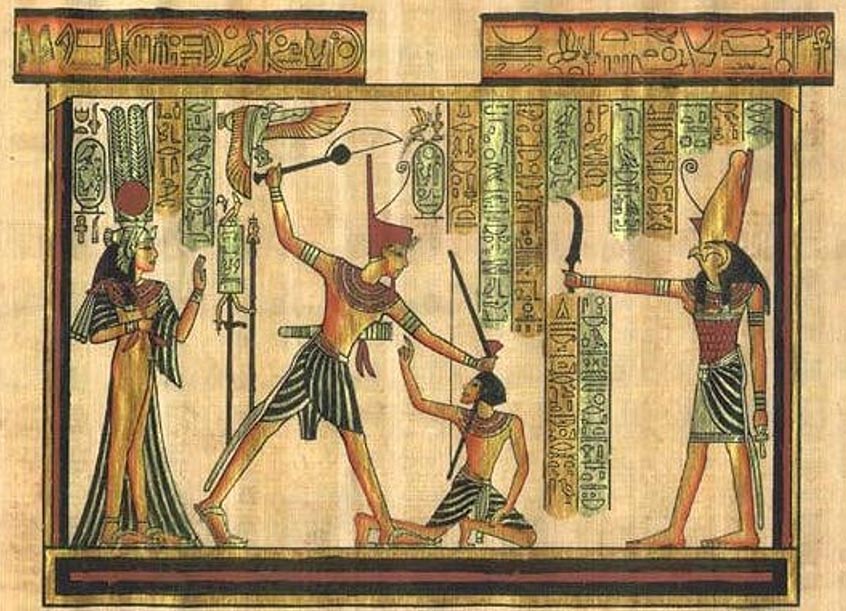
No comments:
Post a Comment